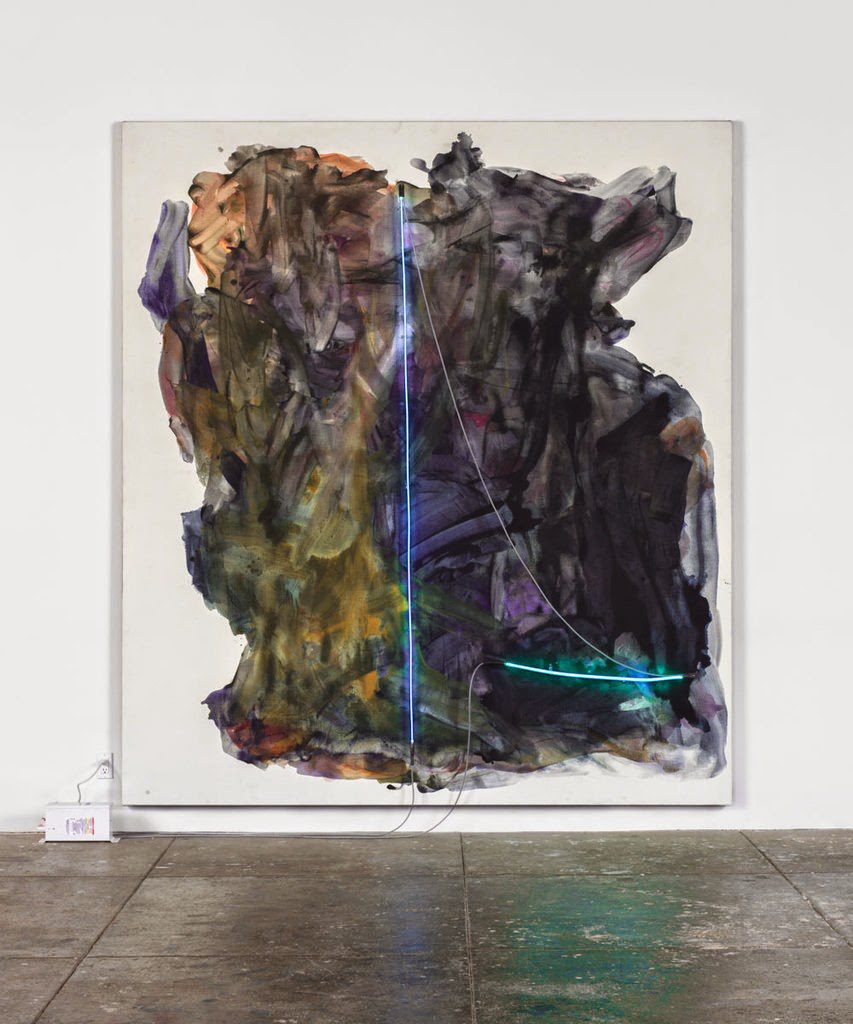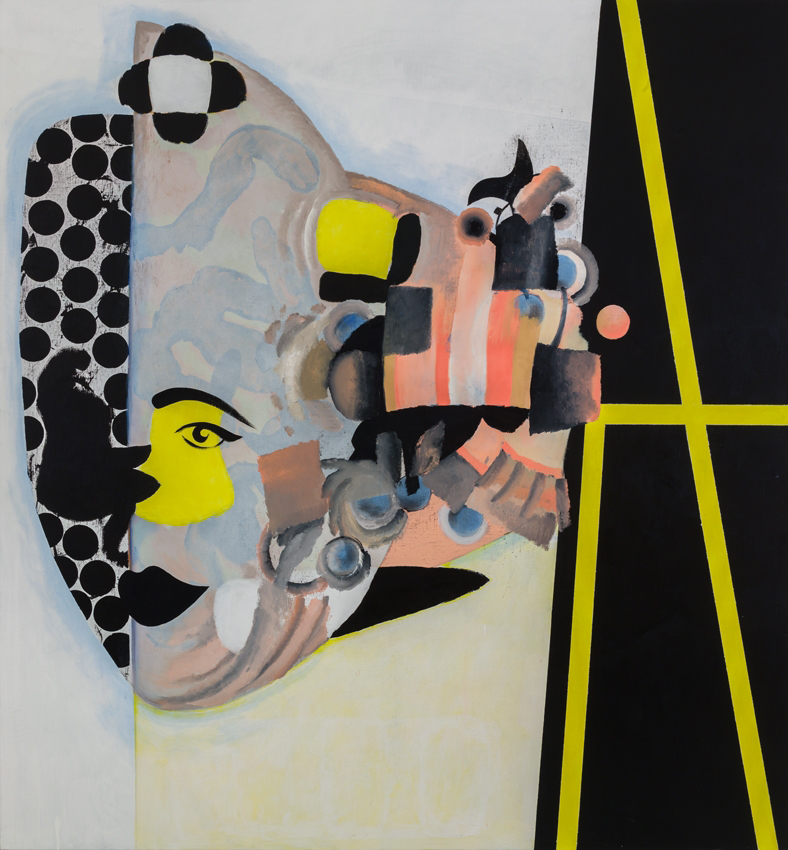In her statement for “The Forever Now,” the contemporary painting show on view at MOMA through April 5, 2015, curator Laura Hoptman makes a case that the Internet enables painters to sample styles from art history, creating an �ahistorical free-for-all� in which artists are �reanimating historical styles or recreating a contemporary version of them, sampling motifs from across the timeline of 20th-century art in a single painting or across an oeuvre, or radically paring their language down to the most archetypal forms.� As a painter and an art professor, I can confirm that this is true.
Most painters, regardless of generation, rely heavily on the Internet to find reference images, to research other artists who have trodden similar paths, and to form communities of kindred artistic spirits. Online research has been especially important in raising the profiles of under-recognized artists and art movements. I never would have discovered my own work’s connection with the Supports/Surfaces artists such as Claude Viallat without the Internet.
Indeed, many of the seventeen artists included in “The Forever Now” work with abstract visual languages, imagery, and ideas found online. Who doesn�t? The more important factor that seems to tie these painters together–and this is where Hoptman�s eye comes into play–is a rather dispiriting interest in strategy and finish over experimentation and heart.
In “The Forever Now,” process, accident, and intuition are sidelined in favor of pre-planning, digital cutting-and-pasting, and depictions of gesture. Hoptman selected familiar, commercially acclaimed artists who tend to approach painting like illustration rather than those who treat the canvas as an arena for experimentation and discovery. Does this mean that painters have overcome all the doubt and uncertainty we have seen in the past few years? No. It means that Hoptman, and perhaps the patrons who help build MoMA’s collection, don’t think the irresolute is as important as I do.
At the entrance to the exhibition, propped against the wall on top of each other as if in a giant�s poster shop, were several enormous works on paper by Kerstin Br�tsch (sorry, no photography allowed). I couldn�t help but ogle at the frames and wonder how much they cost. I would love to frame my 72 x 84 inch paintings under glass. But the overblown frames, although informally placed, sucked the energy out of Br�tsch’s paintings, as did the metal construction that framed her small scale pieces further inside.
Image round up
After years of making labor-intensive, diagrammatic paintings and installations, Julie Mehretu (above) has begun to work gesturally, letting go of the straightedge and simplifying her palette. The dour, agitated, and enigmatic calligraphy seems to reflect our dejected, heavy-hearted times more than her previous work did.
Mary Weatherford makes large-scale gestural paintings to which she adds a few strips of bright neon lights, echoing the inclination these days (especially among MFA students) to make a painting and then combine it with an object. I appreciate each individually, but as a group, like much of the work in the show, the paintings seem formulaic.
Amy Sillman’s paintings are lovely. But is she a little too good at making these abstraction-meets-representation, paintings? And what happened to her signature humor?
Matt Connors work, which I loved at MoMA PS1 in 2012, looked unremarkable. I wondered why Hoptman selected these particular pieces, especially the smaller ones.
Although individual images of her paintings aren’t available, Michaela Eichwald presented two dark abstractions (one can be seen on the back wall above) and an anxious, small-scale portrait (hung above eye level) that seemed unsure, edgy, and heartfelt. I wasn’t familiar with her work, and I want to see more. Mark Grotjahn’s three old-school abstractions (above, on left) have always felt more retro than Now. His recent sculptures, although not on display, are another story.
Taken individually, the work in the show is good, but I think “The Forever Now” misses the mark as a collective assessment of painting today. Many of the paintings struck me as overly contrived and squared away, the awkward inconsistencies and missteps that give canvases life had been rubbed out and eliminated. I couldn’t help but think of the Cubism show at the Met, in which Juan Gris’s neatly rendered images paled in comparison to Picasso’s messy inventiveness. Overall, “The Forever Now” relies too heavily on a command-z aesthetic in which product is more important than process. �
[Image at top: One of Oscar Murillo’s numerous abstractions,
comprising patchwork pieces of scribbled lines and blocks of dirty color
crudely sew together. A pile of paintings sat in a heap, unstretched,
on the floor. As I unfolded them, the guards warned me to be careful not
to bump into the ones that had been stretched and hung on the wall. Stretched = Precious.
As I dragged the pieces back and forth, organizing them on the floor so we could see them all, I felt like I was in my studio. ]
“The Forever Now: Contemporary Painting in an Atemporal World,” with works by Richard Aldrich, Joe Bradley, Kerstin Br�tsch, Matt Connors, Michaela Eichwald, Nicole Eisenman, Mark Grotjahn, Charline von Heyl, Rashid Johnson, Julie Mehretu, Dianna Molzan, Oscar Murillo, Laura Owens, Amy Sillman, Josh Smith, Mary Weatherford, and Michael Williams. Curated by Laura Hoptman, with help from Margaret Ewing. Museum of Modern Art, New York, NY. Through April 5, 2015.
Related posts:
The critics respond: What is painting? (2007)
Saltz asks: What’s MoMA’s problem with women? (2007)
——
Two Coats of Paint is licensed under a Creative Commons Attribution – Noncommercial-No Derivative Works 3.0 United States License. For permission to use content beyond the scope of this license, permission is required.































The Forever Now" misses the mark as a collective assessment of painting today. Many of the paintings struck me as overly contrived …"
But isn't that why it hits the mark? The collective assessment is that painting at the corporate level IS overly contrived. Even Jury Saltz's infomercials about Zombie Formalism maintain the same point. The NYC painting paradigms in general have vitrified into the same status as French late 19th C. L'Ecole Des Beaux Artes painting. This is not that unusual to any tradition. Maybe the Internet is the problem.
I would just point out a bunch of artists in this show are german or from LA, so the 'ecole' isn't of a particularly NYC paradigm. I was inspired by the aggression in the show but didnt love anything particularly. Alls I can say is thank god for the recent Albert York show!
A WOW!!!